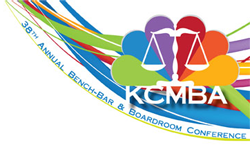Study Proves Telecommuting Saves $Millions
"Telecommuting saves gas, time and money while it helps
you go green." That's the title of our lead article in COMMWORLD's
August 2008 Newsletter. We described the technology that connects remote workers
to the office phone and computer systems. We were helping clients implement telecommuting
back in 2008, and now we have more statistics to confirm the benefits.
Telework Exchange, a public-private partnership focused on demonstrating the values
of telecommuting, sponsored a week-long study in February 2011. 39,694 employees
telecommuted during that week.
The following benefits of telecommuting were found:
Read Full Article »
Can you trust Reports and Buyer's Guides on the Internet?

Choosing telecommunications equipment and services can be confusing.
Today it's more confusing than ever for a business owner or manager charged with
acquiring the best telecom solution for his or her company. Some people assume that
IT guys really know telecom. No offense intended, but most of them don't. Changing
your phone system isn't something you do very often with the typical life-cycle
around seven years. So, people turn to the internet to decide what they need with
questionable results. Although there is definitely useful information to be found
on the internet, there is also a huge amount of misinformation and misrepresentation.
Reports may not be true.
As telecommunications professionals, at COMMWORLD, we're continually
seeking information on the web and elsewhere. To provide valid recommendations for
customers and prospective customers, it's critical for us to know the technology
which we provide as well as competitive products and services. As part of that quest,
we have reviewed countless white papers, comparison guides, reports, buyers guides,
etc. Sadly, most those found on the internet are thinly veiled lead generation tools.
They are sponsored and paid for by sellers of the products which just happen to
get a positive review. Often, leading products from major manufacturers are excluded
from these documents because they don't "play the game".
Read Full Article »

What do the Lurkers, Trolls, Mashups, and Twitter Rage have in common? You guessed
it... they're all Social Media terms. We've been dabbling in Social Media and now
we're ready to jump in.
We're looking at Social Media as another tool to keep in touch with customers and
friends. We hope it will also increase our reach to potential customers. Since it
isn't just one way conversation, you'll have the opportunity to comment, ask questions
and discuss. We do not, however, think it will ever replace picking up the telephone
and calling! (Thank Goodness!)
Read Full Article »
COMMWORLD's Bob Bennett is the Business Philosophy columnist for "KC Business Magazine"

Bob Bennett, Founder and CEO of COMMWORLD of Kansas City writes a column on Business
Philosophy for "KC Business Magazine". The following article on the success rates
of IT implementations is from the March 2011 issue.
Read More »
Community Connections

COMMWORLD participates in Bar Association event
The Kansas City Metropolitan Bar Association will sponsor the 38th Annual Bench
– Bar & Boardroom Conference at the Lodge of the Four Seasons from May
19th through May 21st. COMMWORLD of Kansas City will attend as
a long-time Affinity Partner of the KCMBA.
UMKC Challenges Student Entrepreneurs
COMMWORLD's Bob Bennett is a Judge
"The Regnier Family Foundations / Bank of Blue Valley Venture Creation Challenge"
The annual Challenge is held by the Institute for Entrepreneurship and Innovation
at the University of Missouri - Kansas City. It culminated on April 29th with a
day-long event. Bob Bennett, Founder and CEO of COMMWORLD of Kansas
City, was among this year's judges.
Read Full Article »
 Fun Phone Facts...
Fun Phone Facts...
Question: What do neon lights, aluminum foil and headsets have in common?
Answer: All three were developed in 1910.
Ironically, war is an impetus for development of new products and World War I did
just that. The headset was invented by Nathaniel Baldwin while he was studying physics
and electrical engineering at Stanford University. He was unsuccessful in finding
a private company to produce large quantities of his headset. Then in 1910, before
World War I officially began in 1914, the United States Navy ordered 100 headsets.
Baldwin set up the plant to fill that first order and continued producing headsets
thereafter.
Read Full Article »





 Fun Phone Facts...
Fun Phone Facts...